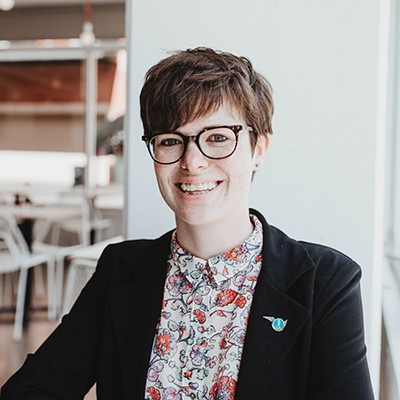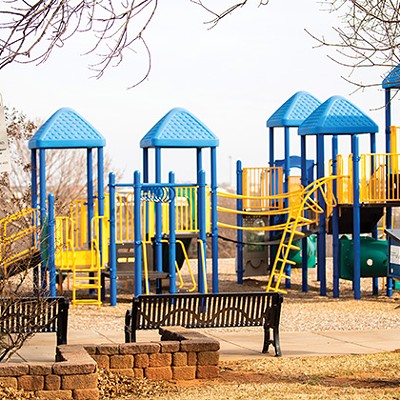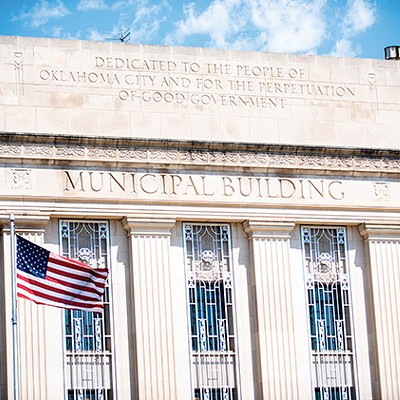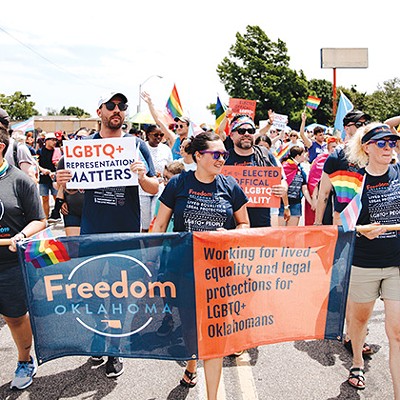Meanwhile, despite the convention center subcommittee’s decision to rule out a site that would have required the city to purchase and move an OGE substation, the city could end up doing that anyway, and has $30 million in MAPS 3 funds — three times the amount set aside for sidewalks — budgeted for that purpose.
All seven of the subcommittees that oversee the eight MAPS 3 projects met on March 22 and 23, and the MAPS 3 Citizens Advisory Board — the body to which all of the subcommittees report — met March 24.
The three most expensive projects in the $777 million package — the downtown park, the modern streetcar and the new convention center — took substantial steps forward during those meetings. The advisory board approved the streetcar subcommittee’s preliminary downtown route, and the city has purchased two additional pieces of property for the 70-acre downtown park, said MAPS project manager Eric Wenger. The convention center subcommittee also whittled the number of possible locations of the future convention center.
A (possible) timeline emerges
Mike Mize of Architectural Design Group, the MAPS 3 program consultant, presented to the subcommittees a draft timeline for each project’s implementation. The dates are not rigid, and ADG will be examining new economic impact data before presenting the schedule to a joint meeting of the Citizens Advisory Board and the City Council on April 19, Mize said. The economic impact data could have an effect on the schedule, he said.
After that joint meeting, the final draft of the schedule will go before the City Council for possible approval in May, Mize said.
Under this timeline, the convention center will be the final project completed, with an estimated date of mid-2021. The distant completion date, which comes two years after the completion of the penultimate project, drew protests from several of the convention center subcommittee members.
“It put the convention center dead last,” said Mike Carrier, subcommittee member and president of the Oklahoma City Convention & Visitors Bureau. “Obviously, I’m disappointed with the initial scheduling. When you look at the convention center and the economic impact it creates for Oklahoma City, having a substandard facility and trying to attract those types of meetings for the next 10 years certainly is challenging for us as we try to plan ahead.”
We didn’t expect the convention center to be the first project done.
—Mike Carrier
Carrier
said he would like to see work begin in 2012 and the facility complete
by 2018, and hopes the start date will be bumped up once the economic
impact data is factored into the project schedule formula.
“We
didn’t expect the convention center to be the first project done. … We
thought it would be one that would start considerably earlier than
what’s being talked about now,” Carrier said.
The
subcommittee members requested that Mize present an alternate project
schedule at the April 19 meeting that would advance construction of the
convention center.
“I
think it’s pretty clear the convention center subcommittee wanted to
see the project moved up,” Mize said. “Because this is a pay-as-you-go
program, you have to collect all of the dollars for any particular phase
prior to beginning that phase. If you have to wait to collect over $200
million to do the construction on the convention center, it means
there’s very little that can go on in that time period.”
The $30 Million Question
During the convention
center subcommittee’s March 22 meeting, the group winnowed the possible
locations of the MAPS 3 convention center to four sites. The group
started with eight choices, not including so-called hybrid sites that
were variations of the eight original sites.
Four sites still in
the running are: a site referred to as Core to Shore North, which is the
former Bob Howard Ford dealership property adjacent to the Oklahoma
City Arena and on the south side of Myriad Gardens; the current Cox
Convention Center site; the North Bricktown site, which is located just
north of Main Street and east of the railroad tracks; and a parking lot
just east of the Bricktown Ballpark, Wenger said.
Not
among the sites that made the cut is what is known as the Core to Shore
South site, a location favored by Mayor Mick Cornett. Included in that
site is an OGE substation that would have to be moved, and for which $30
million in MAPS 3 convention center funds were set aside.
Even
though that site is no longer being considered for the convention
center, the $30 million might still go toward moving the substation,
which poses a problem because it is close to the future downtown park,
Wenger said.
Early
on in the process, Cornett said $30 million should be set aside to move
the substation, but no final decision on whether the money will actually
go toward moving the substation will be made until the City Council
approves it, Wenger said.
“It came out just as the mayor’s comment, and we’re more or less proceeding along those lines,” Wenger said.
In
the MAPS 3 campaign, no mention was made of $30 million going toward
moving the substation, the council’s resolution of intent makes no
mention of the substation, and no subcommittee will oversee the
implementation of the project, Wenger said.
“It
was something that was envisioned as part of the planning of MAPS 3,”
Wenger said. “It’s not something that’s a new item. It was something
considered and conceived very early on. It will be up to council to
decide with a formal plan on how to proceed.”
The
issue likely will be addressed at the April 19 joint meeting, Wenger
said, and though the city has been talking with OGE for about a year on
the matter, there has been no formal agreement with OGE.
Wenger
said the cost could be less than the $30 million set aside for the
project, which is intended to cover the land purchase and moving the
equipment.
Read a new convention center site analysis.











